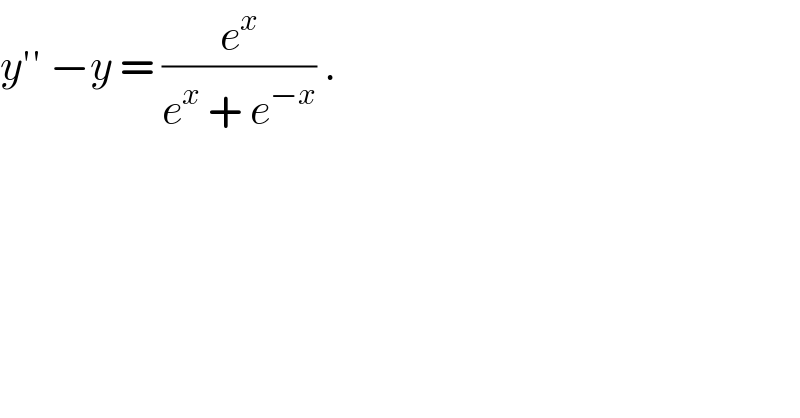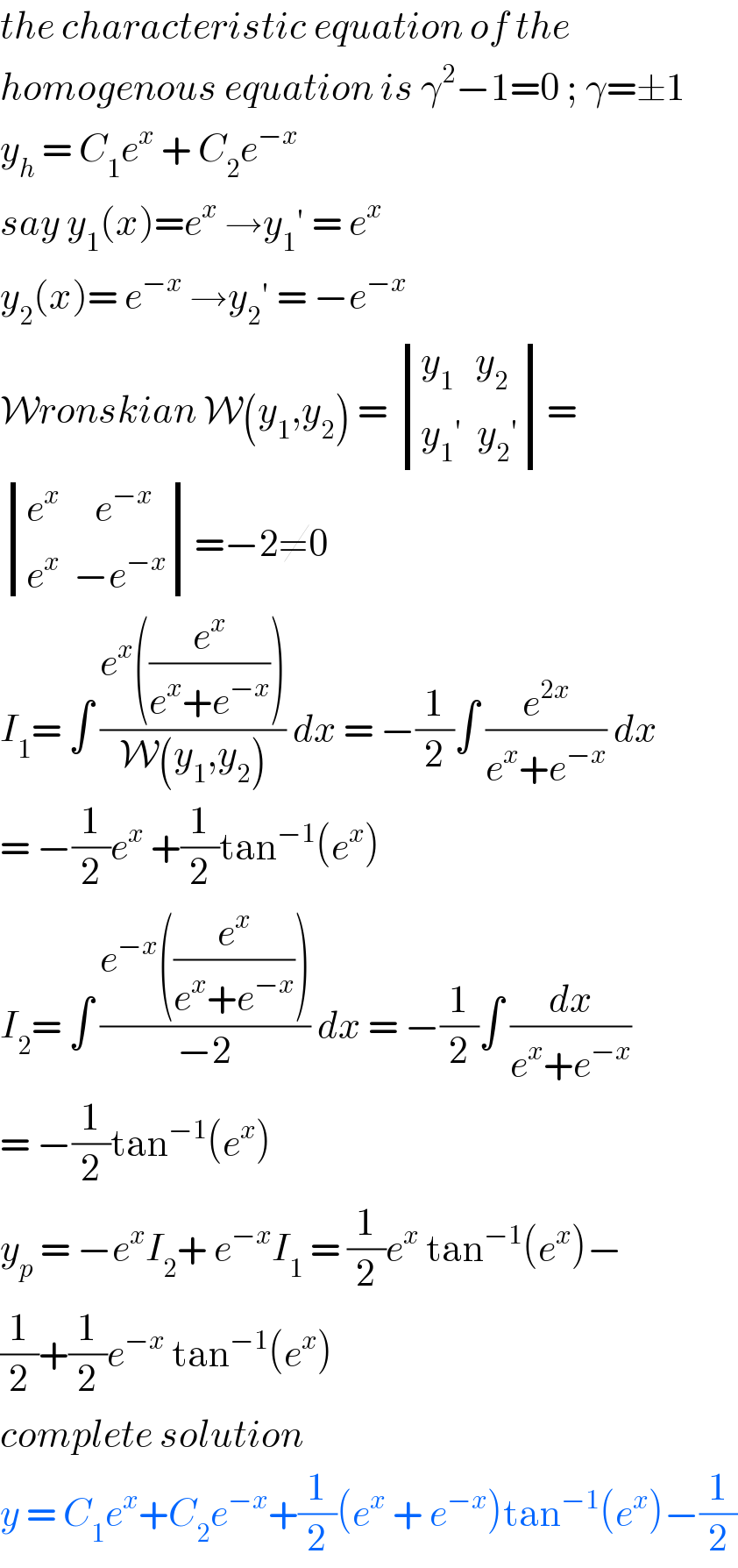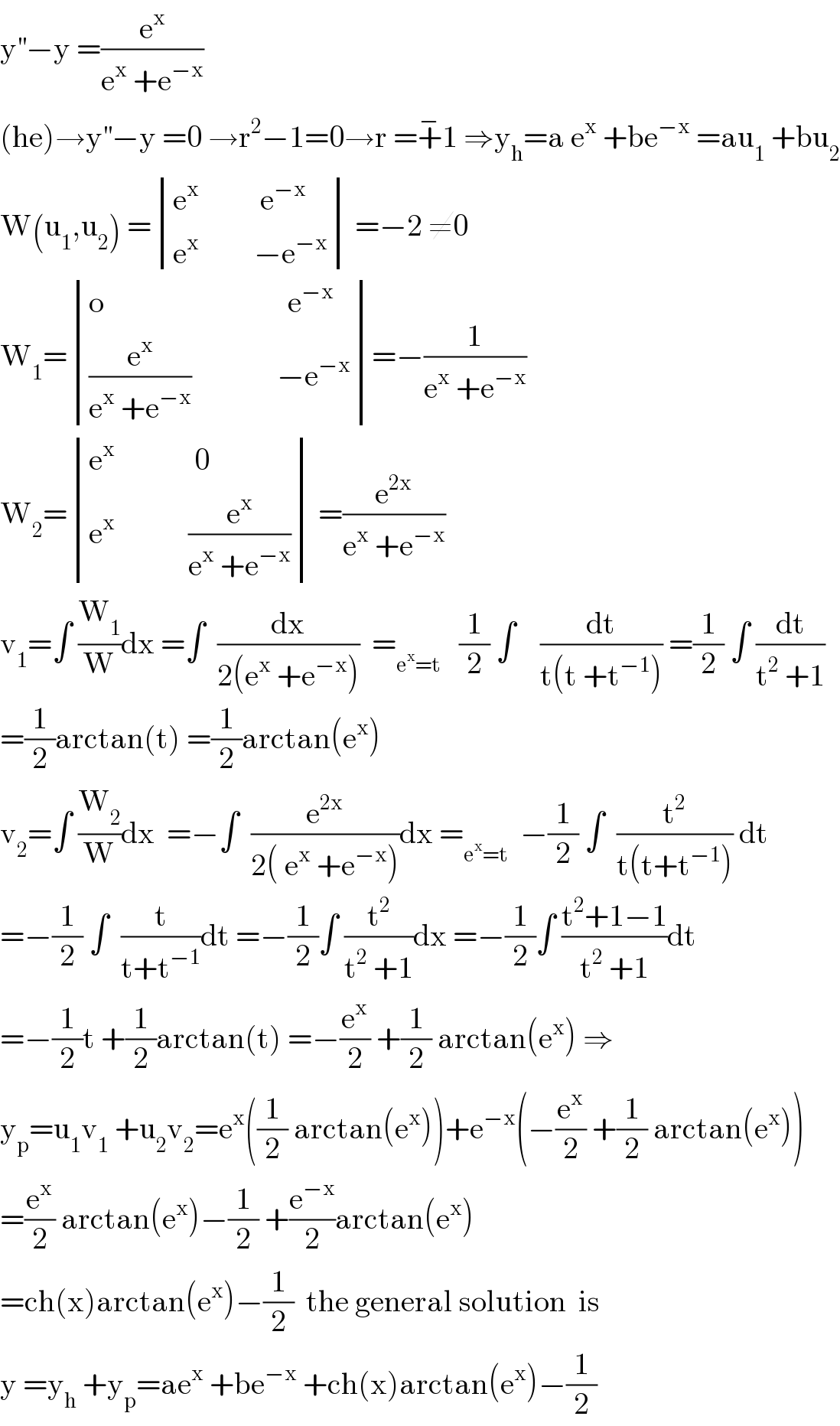
Question and Answers Forum
Previous in Differential Equation Next in Differential Equation
Question Number 103014 by bobhans last updated on 12/Jul/20

Answered by bobhans last updated on 12/Jul/20

Commented by bramlex last updated on 12/Jul/20

Answered by mathmax by abdo last updated on 12/Jul/20

